We’re entering a time when tracking users from app to app and website to website is becoming increasingly difficult. Browser settings and Apple’s iOS 14.5 update are making the Facebook pixel less dependable for the purposes of tracking conversionsA conversion is counted whenever a website visitor performs an action that fires a standard event, custom event, or custom conversion. Examples of conversions include purchases, leads, content views, add to cart, and registrations. More and creating audiences for ad targeting.
That’s rough for advertisers. It creates a need for more granular targeting that isn’t impacted by these privacy developments. Activity that occurs entirely within the Facebook app, for example, can still be tracked and turned into audiences used for targeting.
Facebook offers some options. They just aren’t as robust as they could or should be. I’ve long wondered why many of the requests I make in this post aren’t already available. Until now, it was more of a luxury need. Now, though, they’re the type of options advertisers will need to replace or supplement some of their favorite options that are becoming less useful.
Facebook, if you’re reading this, it’s long past the time to offer these options for advertisers. You have the ability. Doing so will provide a little bit of sunshine during an otherwise tumultuous period.
Let’s go…
Clarification: What Is and Is Not Impacted
These additional audienceThis is the group of people who can potentially see your ads. You help influence this by adjusting age, gender, location, detailed targeting (interests and behaviors), custom audiences, and more. More targeting options are necessary because iOS 14 and other tracking restrictions are impacting the ability to target people based on their activity. Understand that iOS 14, specifically, applies to tracking across apps and websites.
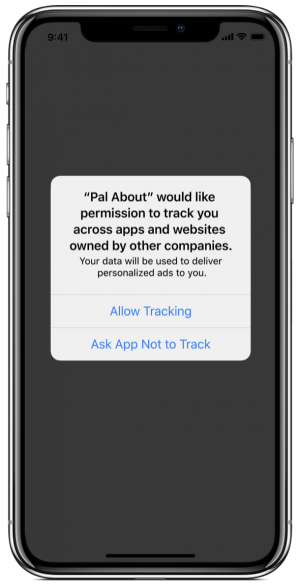
This applies to the creation of website custom audiencesA website custom audience matches people who visit your website with people on Facebook. You can then create ads to show to that audience. More and app activity custom audiencesAn app activity custom audience is an audience used for ad targeting of people who launched your app or took specific actions while using it. More. If someone opts out of tracking, they will be removed from these audiences related to their activity while using an iOS device.
That said, this does not impact tracking that Facebook does and can do within their own app. As a result, this does not impact the following audience types:
- Video
- Lead Form
- Instant Experience
- Shopping
- Instagram Account
- Page Events
- Facebook Page
- On-Facebook Listings
It also doesn’t impact things like customer list audiences, interests, or lookalike audiences (though the source audiences may be impacted).
In this post, we’ll explore ways that Facebook can expand on those audiences that aren’t impacted.
Expansion of Engagement Types
The Facebook Page Engagement audience allows for several ways to target an audience that engages with your page…
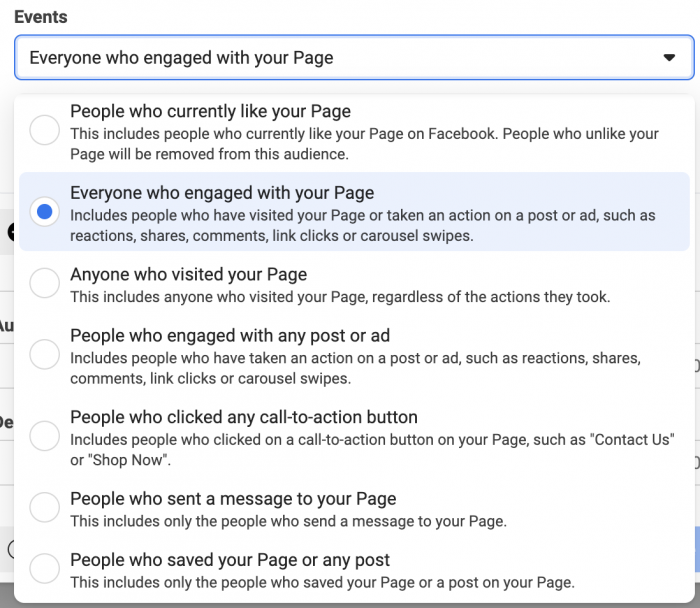
Advertisers also have a similar method for building audiences of people who have engaged with their Instagram business account.
This is great and all, but the types of engagement are extremely general. The nice thing about website custom audiences is that I can isolate very specific types of events for targeting. That granularity does not exist here.
Here are a few engagement types that Facebook could turn into targeting audiences…
- Post Shares
- Post Comments
- Post Reactions (or segmented by specific reaction type)
- Image Click
You probably don’t realize this, but most of these actions (except for image click) were previously possible. Creation wasn’t part of Facebook’s main audience interface, though. It was done within Facebook Analytics.
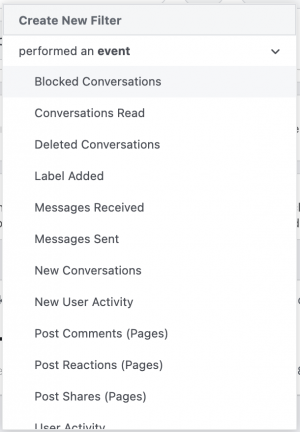
In the example above, you’d first create a filter, save it, and then create a custom audience from it. Perfect, right? The problem is, of course, that Facebook Analytics went away on June 30, 2021.
We know that Facebook has the information to create these audiences. We could create them before. Facebook needs to make this part of the main audience interface.
Engagement on Specific Posts
Maybe you want to reachReach measures the number of Accounts Center Accounts (formerly users) that saw your ads at least once. You can have one account reached with multiple impressions. More those who shared or commented but limit retargeting to that activity related to a specific post. In the example above, creating audiences for all comments, shares, or reactions would be good for building general targeting audiences. But there’s often a more specific need.
If you liked, shared, or commented on a specific post, I could then show you an ad related to that topic. Relevance, as always, is key.
Look, I understand that Facebook’s argument may be that this type of granularity wouldn’t be useful for those with small budgets or low levels of activity on their posts. The audience sizes will be small.
Fine. But it could be enormously valuable for those with higher budgets and those with more activity. Just make it available and let us sort out whether we have the volume to make it useful.
More Granular Instant Experience Actions
The Instant Experience ad format is likely to become more popular among Facebook advertisers since it doesn’t rely on the uncertainty of the pixel for audience creation. It keeps users entirely inside an “instant” experience that can consist of various “components,” or blocks of text, images, videos, products, or more.
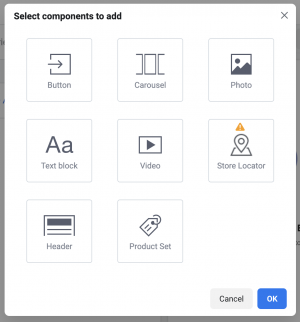
You can create audiences of people who engage with these experiences. Audience creation options include anyone who opened the Instant Experience or anyone who opened and then clicked a link within it.
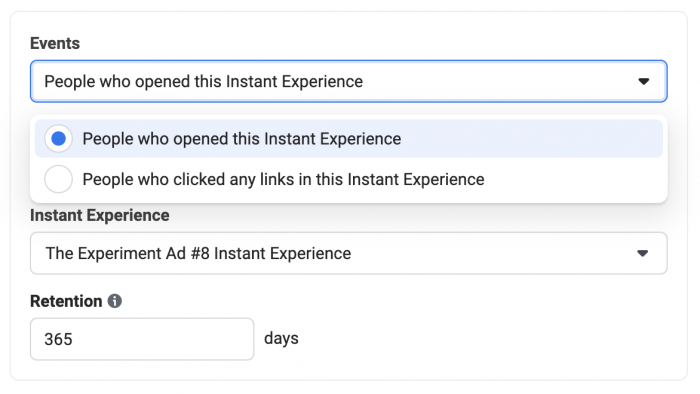
That’s a pretty soft offering of options. In addition to adding the components that were engaged with, what about adding specificity to the link clicked within the Instant Experience? You could include multiple links and buttons within the experience. Why not allow the ability to create an audience based on which one was clicked?
ImpressionsImpressions are the number of times your ads were displayed to your target audience. Impressions aren't counted if it is detected they came from bots. More Shown
You may have been shown an ad or post, but you didn’t necessarily click on it. In fact, the odds are better that you didn’t. What if I could target or exclude people who were already shown a post or ad?
For example…
1. Show to followers who haven’t seen it.
Let’s say you published something organically to your followers. As we know, a small percentage of those followers will likely see it. What if we could create an ad that reaches only those who weren’t shown it so far? We could do that, but only if we could create an audience of those who were shown an impression and exclude that group.
2. Control frequencyCalculated as (Impressions/Reach), Frequency is a Facebook ads metric that measures the average number of times users have seen your ad. More.
One of the biggest complaints among advertisers is that Facebook doesn’t give us enough ways to control frequency. We waste money showing ads to people who see them over and over again.
Currently, the best way to do that would be to use Frequency Capping when optimizing for Reach or using Reach and Frequency buying.
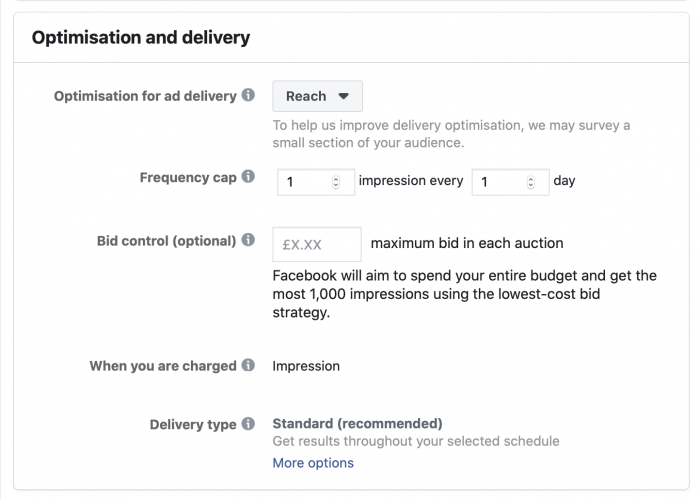
But, how would you control reach when simply optimizing for Conversions or something else with a modest budgetA budget is an amount you're willing to spend on your Facebook campaigns or ad sets on a daily or lifetime basis. More? We could do that by creating an audience of people who already saw our post or ad during a set window of time (let’s say 14 days) and exclude that group.
3. Show a variety of content.
Or maybe we want to reach people who saw a post or ad (but didn’t necessarily engage with it) and show them something else. We could do that if we could target those who were shown that post or ad.
Frequency of Engagement or Impressions
One of the really cool and underutilized features related to website custom audiences is buried within pixel event audiences. You can create audiences based on parameters, values, and frequency of actions.
This is great! But we’ve already discussed how the pixel is becoming less dependable in the age of iOS 14 and less tracking. Anyone who opts out of tracking will be removed from these types of audiences.
What if we could apply this type of granularity to engagement with other types of Facebook content?
1. Frequency of engagement.
We mentioned creating an audience of people who engaged with a specific post or ad. But what about people who have engaged multiple times across your content? People who routinely like or love your posts, for example, may be valuable. Or people who message frequently, click links, comment, or provide numerous other types of engagement. It would be great to be able to isolate these people!
You can currently create an audience of people who engaged with any post or ad, but there’s no frequency element. That would decrease the audience size but increase the relevance.
2. Frequency of impressions.
Once again, a way to control frequency. Previously, we discussed creating an audience of people who were shown a specific post or ad during a specified window of time so that we could exclude them. Instead, what if we could exclude only those who saw that post or ad three times during the past seven days?
Watch Video
Your Turn
Facebook has the ability to provide these targeting options to advertisers. It would only enhance the performance of ads and the creativity of advertisers. Why not provide them?
Any other targeting options you want to see? Let me know in the comments below!







